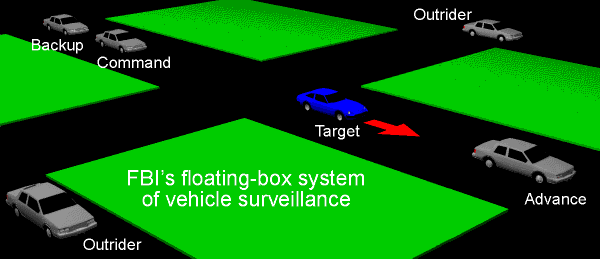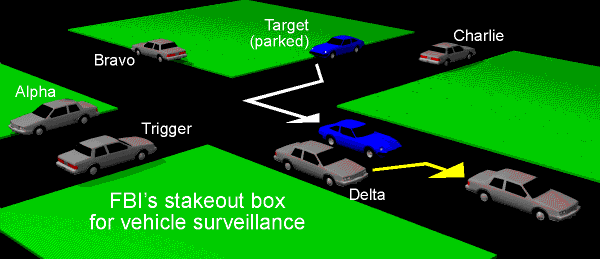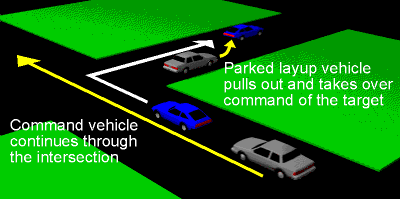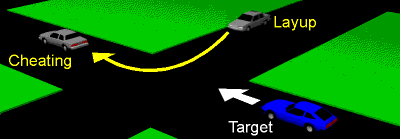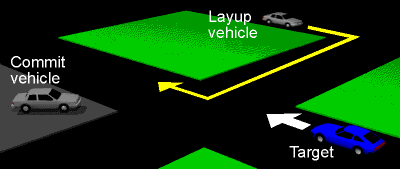|
...
Here is the small
print. It appears here because we have found that maintaining a corporate
front is the only way we can protect ourselves against interference by
governments and their agencies.
The legal underpinnings of our corporate front are our first line of
defense against audit-attacks and other methods that the authorities use to
suppress legitimate dissent, protest, and activism. The authorities are
also determined to prove their hypothesis that Spy & CounterSpy is
somehow funded by a foreign intelligence agency or terrorist group – but
our double entry accounting record of corporate revenue and expenses is our
shield against fabricated evidence by an overzealous investigator or case
officer.
Contents Copyright ©1998 Lee
Adams.
All rights reserved. Published by Lee Adams Seminars. Provided
for research, education, information, and entertainment purposes only. We
are not security consultants – we are investigative journalists and
survivors of surveillance. Spy & CounterSpy and Spy school
for the rest of us and How To Make People Say Yes! are trade-marks
in USA, Canada, and/or other countries.
Lee Adams Seminars is a division of Here's-how, Right-now! Seminars Inc.
OFFICE:
3273 Tennyson Avenue, Victoria, British Columbia, Canada.
MAIL: PO
Box 8026, Victoria BC, CANADA V8W 3R7.
TELEPHONE: (250) 475-1450.
FAX:
(250) 475-1460.
EMAIL:
reader_service@SPYCOUNTERSPY.com
WEB SITE: http://www.SPYCOUNTERSPY.com
License and Limited Warranty
Spy &
CounterSpy is an electronic magazine, hereinafter together with the
information contained therein called the "product". By using the
product you agree to the following terms and conditions. If you do not
wish to be bound by these terms and conditions, do not use the product nor the
information contained therein.
Spy &
CounterSpy is published for information, education, entertainment and
research purposes only.
We are not security consultants – we are investigative journalists
and survivors of surveillance. We are not rendering legal, accounting,
management, security, tactical, political, or psychological counseling. If
such advice is required the services of a competent professional should be
obtained. We assume no responsibility for the accuracy of, or errors or
omissions in, the information provided. In no event shall we be liable for
any direct, indirect, consequential, special, or incidental damages arising out
of the use of, or the inability to use, information described in the product.
The names of persons, characters, corporations, institutions,
organizations, geographic locations, products, and services used to explain and
illustrate human behavior are entirely fictitious, except for the names of
existing intelligence agencies, security services, and police agencies – or
except as otherwise noted. No resemblance to actual individuals or
entities is otherwise intended or implied.
License
–
Here's-how, Right-now! Seminars Inc. grants you, and you accept, a
nonexclusive nontransferable license as follows for the product.
You may use the product for your own use. You may make copies of the
product on your hard disk and on floppy disk for backup purposes. You may
print paper copies of the product for personal use. You may copy and
distribute Internet-readable copies of the product by email, by link, by posting
at your website, and for critical reviews and news reports in electronic or
print form. You shall not otherwise modify or adapt the product using any
means, electronic or mechanical, either in displayable form or as HTML source
code.
You shall not otherwise sell or transfer reproductions of the product to
other parties in any way, nor rent, lease, or preview the product to other
parties without the prior written permission of Here's-how, Right-now!
Seminars Inc.
Limited Warranty – You
expressly acknowledge and agree that use of the product is at your sole risk.
The product is provided "as is" and without warranty of any
kind, and Here's-how, Right-now! Seminars Inc. expressly disclaims all
warranties, express or implied, including, but not limited to, the implied
warranties of merchantability and fitness for a particular purpose. No
advertising, description, or representation, whether made by Here's-how,
Right-now! Seminars Inc.'s agent, dealer, or employee shall be binding upon
Here's-how, Right-now! Seminars Inc. or shall change the terms of this
disclaimer or the limited warranty set forth herein.
Here's-how, Right-now! Seminars Inc. does not warrant that the
methods contained in the product will meet your requirements, or that the
performance of the methods will be error-free, or that delivery of the product
will be uninterrupted or error-free, or that defects in the product will be
corrected.
Furthermore, Here's-how, Right-now! Seminars Inc. does not warrant
or make any representations regarding the use or the results of the use of the
product in terms of its correctness, accuracy, reliability, or otherwise. No
oral or written information or advice given by
Here's-how, Right-now! Seminars Inc. or its authorized representatives
shall create a warranty or in any way increase the scope of this limited
warranty.
Should the product prove defective, you (and not Here's-how,
Right-now! Seminars Inc.) assume the entire cost of all necessary
correction, repair, treatment, or servicing. Some jurisdictions do not
allow the exclusion of implied warranties, so the above exclusion may not apply
to you.
Here's-how, Right-now! Seminars Inc. shall not be liable for
special, incidental, consequential, or other damages, even if Here's-how,
Right-now! Seminars Inc. is advised of or aware of the possibility of such
damages. This means that
Here's-how, Right-now! Seminars Inc. shall not be responsible or liable
for lost profits or revenues, or for personal injury, or for damages or costs
incurred as a result of loss of time, data, or use of the product, or from any
other cause. In no event shall Here's-how, Right-now! Seminars Inc.'s
liability exceed the purchase price, if any, of the product. Some
jurisdictions do not allow the exclusion or limitation of incidental or
consequential damages, so the above limitation or exclusion may not apply to
you. The author and publisher of the product have used their best efforts
in preparing the product and the material contained in it. These efforts
include the research, development, and testing of the theories and methods in
order to determine their effectiveness. The author and publisher make no
warranty of any kind, express or implied, with regard to the techniques
contained in the product. The author and publisher shall not be liable in
the event of incidental or consequential damages in connection with, or arising
out of, the furnishing, performance, or use of the techniques, associated
instructions, and/or claims of productivity gains.
|


